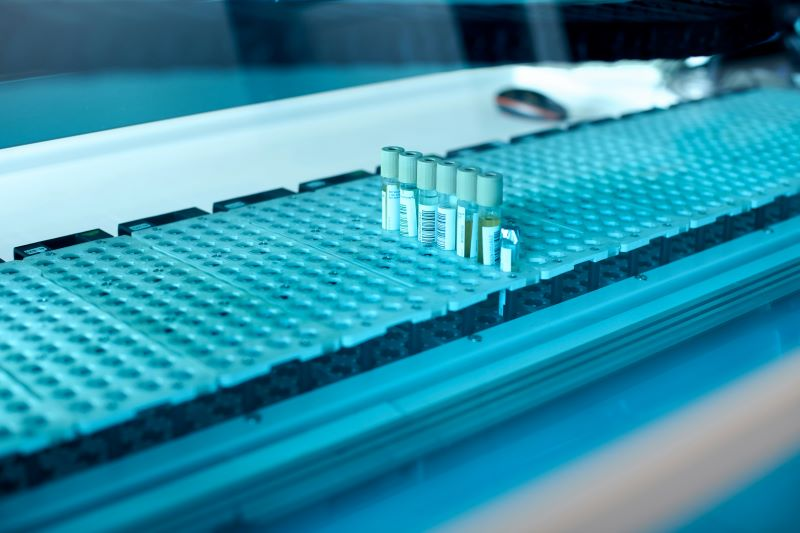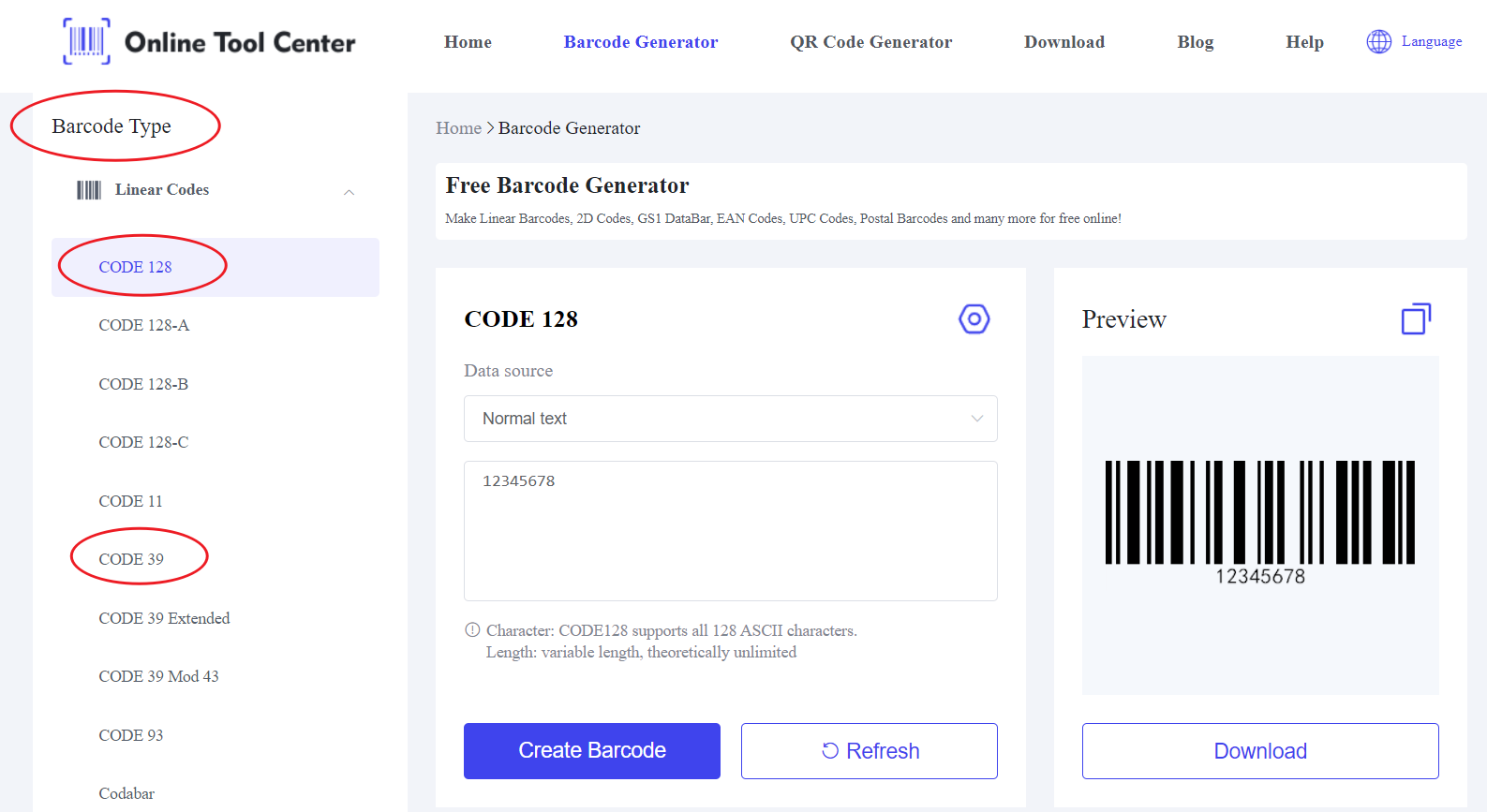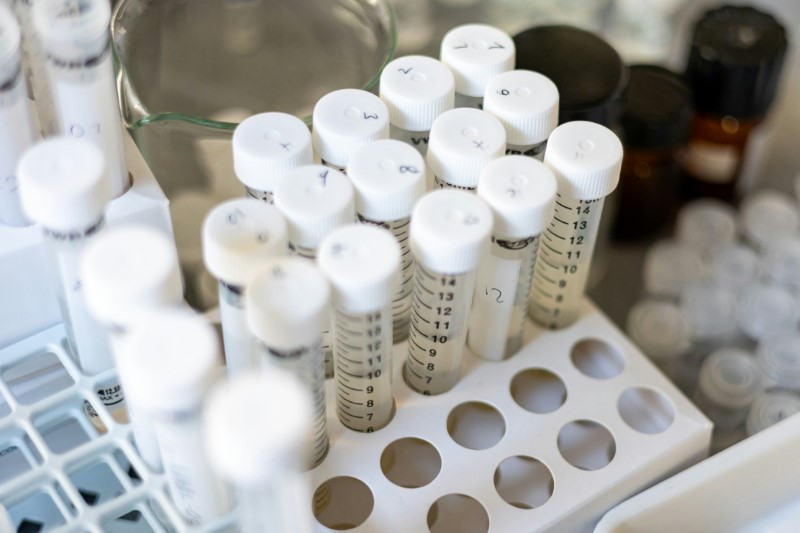In laboratory environments, the accuracy and traceability of samples are non-negotiable.
From clinical diagnostics to pharmaceutical research, the use of test tube barcodes is an essential practice that ensures reliable sample identification, efficient data management, and adherence to stringent regulatory standards.
Understanding Test Tube Barcodes
A test tube barcode is a machine-readable representation of data that is used to identify and track individual test tubes within a laboratory.
These barcodes are typically printed on durable labels designed to adhere to test tubes and withstand the various conditions encountered during sample storage, handling, and processing.
The information encoded in a test tube barcode usually includes a unique identifier for each sample, which links to a database containing detailed information about the sample, such as patient or study ID, collection date, and sample type.
This systematic approach to identification minimizes human error and ensures that samples are accurately tracked throughout their lifecycle.

Importance of Labeling Test Tubes with Barcodes
Labeling test tubes with barcodes offers several key advantages, making it an indispensable practice in modern laboratories:
1. Enhancing Accuracy and Reducing Errors
Human errors in manual sample labeling are a significant risk, especially in high-stakes environments like clinical laboratories. By using test tube barcode labels, laboratories can eliminate much of the manual data entry that leads to these errors, ensuring that each sample is correctly identified and processed.
2. Improving Efficiency and Workflow
Automating the process of labeling test tubes with barcodes streamlines sample management, allowing for rapid scanning and data entry. This efficiency reduces the workload on laboratory staff, enabling them to focus on analytical tasks rather than administrative duties. Additionally, barcode scanning accelerates sample sorting, processing, and retrieval, which is crucial when dealing with large volumes of samples.
3. Ensuring Full Traceability
The ability to trace every step a sample takes within the laboratory, from collection to analysis and storage, is crucial for maintaining data integrity and complying with regulatory requirements.
Test tube barcodes provide this traceability by recording each interaction with the sample, creating a detailed audit trail that can be reviewed as needed.
4. Supporting Scalability
As laboratories expand and handle more samples, the scalability of their sample management systems becomes vital. Test tube barcode labels offer a scalable solution that can easily integrate with Laboratory Information Management Systems (LIMS), supporting the seamless management of increasing sample volumes without compromising accuracy or efficiency.
Barcode Types of Test Tube
Test tube barcodes typically use a few specific types of barcodes, depending on the amount of information that needs to be encoded and the space available on the label. The most common barcode types used for test tube labeling include:
1. 1D Barcodes (Linear Barcodes):
● Code 128: This is a widely used linear barcode symbology because it can encode a large amount of data in a relatively small space. It's particularly useful when the barcode needs to contain a mix of numbers and letters.
● Code 39: Another common linear barcode, Code 39 is often used for simpler applications where less information needs to be encoded. It's durable and easy to scan but requires more space than Code 128.

2. 2D Barcodes:
● DataMatrix: DataMatrix barcodes are popular in laboratory settings because they can encode a significant amount of data within a very small area, making them ideal for test tubes where space is limited.
They are also highly resilient to damage and can still be scanned accurately even if part of the barcode is obscured or damaged.
● QR Code: While more commonly associated with consumer applications, QR codes are sometimes used in laboratories, particularly when more complex data or URLs need to be encoded and easily accessible via smartphones or other devices.
Among these, DataMatrix is often the preferred choice for test tube barcodes due to its compact size, high data capacity, and robustness in challenging environments.
Choosing the Right Test Tube Barcode Labels
Selecting the appropriate test tube barcode label is critical for ensuring that labels remain legible and adhesive under various laboratory conditions. Here are some key considerations:
1. Environmental Resistance
Laboratory environments can be harsh, with samples often exposed to extreme temperatures, chemicals, and moisture. Test tube barcode labels must be designed to withstand these conditions. For example:
● Cryogenic Labels: Used in environments where samples are stored at extremely low temperatures, such as in liquid nitrogen. These labels are specially formulated to remain adhesive and legible even in cryogenic storage.
● Chemical-Resistant Labels: In labs where test tubes may come into contact with aggressive chemicals, labels need to resist smudging or deterioration to maintain barcode integrity.
2. Durability
Depending on the sample's intended storage duration, different levels of durability are required.
Permanent labels are ideal for long-term storage, ensuring that the barcode remains intact over the years, whereas removable labels are suited for short-term use, where tubes may need to be reused.
3. Barcode Symbology and Design
Choosing the correct barcode symbology (e.g., Code 39, DataMatrix) is essential based on the amount of information to be encoded and the scanning equipment available.
Additionally, the barcode should be printed at a size and resolution that ensures reliable scanning.
Additionally, the barcode should be printed using label printers that can produce the correct size and resolution, ensuring reliable scanning.

Best Practices for Labeling Test Tubes
To optimize the use of test tube barcodes in your laboratory, consider these best practices:
1. Standardization Across the Laboratory
Standardizing barcode formats and label placement ensures consistency, reducing the risk of scanning errors and improving the efficiency of sample processing. Establishing standard operating procedures (SOPs) for barcode creation and application is crucial.
2. Proper Label Placement
Place the test tube barcode label on a part of the tube that is less likely to be obscured by the sample contents or condensation. Consistent placement across all samples helps with quicker scanning and identification.
3. Regular Quality Control
Implement a routine inspection process for barcode labels to ensure they remain legible and scannable. This is especially important for samples stored in extreme conditions, where label degradation can occur.
4. Integration with LIMS
Ensure that your test tube barcode system is fully integrated with your Laboratory Information Management System (LIMS). This integration allows for real-time tracking, immediate data entry, and comprehensive audit trails, minimizing the chance of data discrepancies.
The Future of Test Tube Barcoding
Innovations in barcoding technology are continually improving the accuracy and efficiency of laboratory sample management.
Advances such as 2D barcodes, which can encode more information in a smaller space, and RFID (Radio-Frequency Identification) technology, which allows for non-line-of-sight scanning, are paving the way for even more sophisticated tracking systems.
For laboratories looking to enhance their barcode labeling systems, choosing a versatile and free barcode generator is essential.
Such barcode generators allow for the easy creation of barcodes that meet the specific needs of your lab, ensuring that your sample management processes are as efficient and error-free as possible.
In summary, test tube barcodes are vital tools that significantly enhance laboratory operations by ensuring accurate sample identification, improving efficiency, and enabling full traceability.
By following best practices in the use of test tube barcode labels and integrating these systems into broader laboratory management processes, laboratories can achieve higher levels of precision and reliability in their work.





